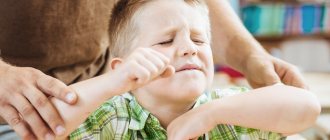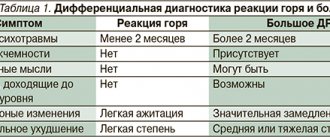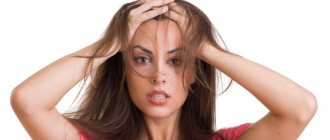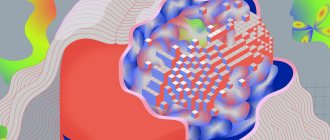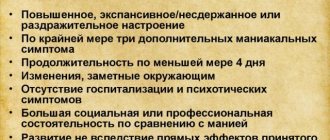Medical information is reliable Checked by Eremin Alexey Valentinovich
Acute psychotic disorder belongs to the group of transient psychoses. They are characterized by manifestations in the form of delusions, affective deviations, disorganization of thinking, hallucinations, mood disorders and other symptoms. It begins suddenly, there is no prodromal period. Recovery occurs after a few days or months. This pathological condition is most often observed in women, which distinguishes it from schizophrenia, in which the likelihood of its occurrence does not depend on gender.
Causes of acute psychotic disorder
The main reason for the development of acute psychotic disorder is severe psychotrauma, that is, a situation that is perceived by a person as severe stress:
- death of a loved one;
- divorce;
- job loss;
- car accident;
- stay in a war zone;
- physical or mental violence;
- long stay in a mentally aggressive environment;
- loss of money;
- economic difficulties.
Provoking factors contributing to the appearance of an acute psychotic reaction may be:
- hereditary predisposition;
- severe fatigue;
- lack of sleep;
- alcohol abuse;
- taking drugs.
Most often, acute psychotic disorder occurs in a certain type of person. Usually these are impressionable people who tend to take difficulties to heart, or people with a high level of fear and anxiety. In some cases, strong positive emotions can also cause the development of the disease.
Diagnostics and varieties
According to the international classification, acute psychotic disorder is diagnosed based on the following signs:
- sudden onset with hallucinations, delusions, incoherent speech;
- not meeting criteria for a depressive episode or mania;
- confusion not associated with organic disorders;
- exclusion of possible brain diseases, severe metabolic disorders;
- lack of connection between the attack and the use of a psychoactive substance;
- the presence of a connection between a stressful situation that occurred no earlier than two weeks before the development of clinical symptoms of acute psychosis.
Depending on the characteristics of the manifestation, the following types of acute psychotic disorder are distinguished:
- polymorphic with signs of schizophrenia;
- polymorphic without signs of schizophrenia;
- schizophrenia-like (with a schizophrenic reaction, acute form of schizophrenia, schizophrenomorphic);
- other types of delusional nature (including paranoid psychogenic deviations);
- other forms;
- unspecified disorder or reactive psychosis.
The symptoms of acute psychotic disorder are quite diverse, and often they can simulate other mental disorders - manic-depressive syndrome, schizoaffective disorders, depressive episode. But these diseases are preceded by a prodromal period and require long-term treatment. And in an acute process, symptoms increase quickly and are quickly relieved with the help of medications.
F22 Chronic delusional disorders.
F22.0 Delusional disorder.
A. The presence of a delusion or a system of interrelated delusional ideas other than those that were listed as typical schizophrenic under criteria G(1) b) or d) for F20.0-F20.3 (i.e., excluding those that are completely impossible in content or culturally inadequate). The most common examples are delusions of persecution, grandeur, hypochondriacal, jealousy or erotic.
B. Delirium in criterion A must last for at least 3 months.
B. The general criteria for schizophrenia (F20.0-F20.3) are not met.
D. There should not be chronic hallucinations of any kind (but there may be transient or rare auditory hallucinations in which the patient is not discussed in the third person and which are not commentary in nature).
E. Depressive symptoms (or even a depressive episode (F32-)) may be present from time to time, but delusions persist even when mood disorders are not noted.
E. Most commonly used exclusion criteria. There should be no evidence of a primary or secondary brain disorder as specified in F00-F09 or a substance use disorder (F1x.5).
Indication for identifying possible subtypes.
If desired, the following types can be distinguished:
- persecutory type;
- litigious type;
- type with ideas of relationship;
- the type with ideas of greatness;
- hypochondriacal (somatic) type;
- the type with ideas of jealousy;
- erotomanic type.
F22.8 Other chronic delusional disorders.
This is a residual category for chronic delusional disorders that do not meet the criteria for delusional disorder (F22.0). Disorders in which delusions are accompanied by chronic hallucinatory “voices” or schizophrenic symptoms that do not fully meet the criteria for schizophrenia (F20.-) should be coded here. Delusional disorders lasting less than 3 months should nevertheless be coded at least temporarily in F23.-.
F22.9 Chronic delusional disorder, unspecified.
Acute polymorphic psychotic disorder
Acute polymorphic psychotic disorder without signs of schizophrenia most often manifests itself in the form of delusions, where the main theme is one’s own greatness, or guilt, the presence of a serious illness, or persecution. Hallucinations and delusions replace each other every day and hour.
There is also a constant change of affects, the mood can be elevated, and after a while it is replaced by severe depression. The symptoms of this disorder are very variable and changeable over time. Thinking and physical activity may slow down or speed up. Anxiety, confusion, and lack of attention are often observed. Distinctive features of polymorphic disorder are:
- constant change in the intensity of manifestation and nature of hallucinations, delusional ideas, mood;
- suddenness of symptoms;
- absence of criteria characteristic of other mental disorders.
Acute polymorphic mental disorder with symptoms of schizophrenia is considered a more severe form of the disorder, it can develop into schizophrenia, and is usually accompanied by the following symptoms:
- delirium of influence of external forces on the patient;
- confidence in your superpowers;
- conviction in reading his thoughts, imposing them from the outside;
- hallucinations with voices that evaluate his actions, talk to each other, laugh at him (Kandinsky-Clerambault syndrome);
- other psychotic manifestations and affective disorders.
These symptoms do not always indicate that a person has developed schizophrenia. If assistance is started in a timely manner, severe mental deviation can be avoided. Otherwise, the patient’s condition worsens, and a schizophrenic personality defect gradually forms. Thus, an acute disorder of this type is diagnosed based on the following signs:
- rapid development of the clinic and abrupt start;
- typical changes characteristic of schizophrenia that last less than a month;
- constantly alternating psychotic and affective disorders (anger, euphoria, anxiety).
F25 Schizoaffective disorders.
Note This diagnosis is based on the relative "balance" of the amount of severity and duration of schizophrenic and affective symptoms
G1. The disorder meets the criteria for one of the mood disorders (F30.-, F31-, F32.-) of moderate or severe severity, as defined for each subtype.
G2. For most of the time, for at least a two-week period, symptoms of at least one of the following symptom groups (which almost coincide with the symptom groups of schizophrenia (F20.0-F20.3)) are clearly present:
1) “echo” of thoughts, insertion or subtraction of thoughts, openness of thoughts (F20.0-F20.3, criterion G1.1 a)); 2) delusions of influence or influence, clearly relating to movements of the body or limbs or to certain thoughts, actions or sensations (F20.0-F20.3, criterion G1.1 b)); 3) hallucinatory “voices” commenting on the patient’s behavior or discussing it among themselves; or other types of hallucinatory “voices” emanating from any part of the body (F20.0-F20.3, criterion G1.1 c)); 4) persistent delusional ideas of any kind that are culturally inadequate and completely impossible in content, but these are not just ideas of grandeur or persecution (F20.0-F20.3, criterion G1.1 d)), for example, that the patient visits other worlds, can control clouds with his breath, communicate with plants or animals without words, etc.; 5) clearly inadequate or broken speech or frequent use of neologisms (expressed form of criterion G1.2 b) in the category F20.0-F20.3); 6) frequent occurrence of catatonic behaviors such as freezing, waxy flexibility and negativism (F20.0-F20.3, criterion G1.2 b)).
G3. Criteria G1 and G2 must occur during the same episode and at least for some time simultaneously. In the clinical picture, symptoms of both G1 and G2 criteria should be pronounced.
G4. Most commonly used exclusion criteria. The disorder cannot be attributed to an organic mental disorder (in the sense of F00-F09) or to intoxication, dependence or withdrawal states associated with the use of psychoactive substances (F10-F19).
F25.0 Schizoaffective disorder, manic type.
A. The general criteria for schizoaffective disorder (F25) must be met.
B. The criteria for manic disorder (F30.1 or F31.1) must be met.
F25.1 Schizoaffective disorder, depressive type.
A. The general criteria for schizoaffective disorder (F25) must be met. B. The criteria for a depressive disorder of at least moderate severity (F31.3, F31.4, F32.1 or F32.2) must be met.
F25.2 Schizoaffective disorder, mixed type.
A. The general criteria for schizoaffective disorder (F25) must be met. B. The criteria for mixed bipolar disorder (F31.6) must be met.
F25.8 Other schizoaffective disorders.
F25.9 Schizoaffective disorder, unspecified.
Note
If desired, the following subtypes of schizoaffective disorder can be distinguished depending on its dynamics:
F25.х0 Only simultaneous development of schizophrenic and affective symptoms. Symptoms are defined in criterion G2 from rubric F25. F25.x1 Simultaneous development of schizophrenic and affective symptoms with subsequent persistence of schizophrenic symptoms outside of periods of presence of affective symptoms
Schizophrenia-like acute psychotic disorder
Schizophrenomorphic acute disorder is accompanied by Kandinsky-Clerambault syndrome, delusions and hallucinations. Usually the patient experiences confusion or is in a state of passion. In the first case, a person does not understand who he is, where he is and at what time. The second option is accompanied by anger, severe fear, anxiety, and some experience a state of ecstasy and euphoria.
Acute schizophrenia-like psychotic disorder develops very quickly. In some cases, a person exhibits disorganization of speech; it is fragmented and devoid of meaning. Sometimes he experiences catatonia - freezing for a long time in one position, or motor agitation.
With this deviation, typical symptoms characteristic of schizophrenia are noted. But the main difference between this disorder and other acute psychoses is that affective and psychotic symptoms do not change, but are stable. Thus, during a schizophrenia-like attack there are a number of manifestations that make it possible to determine this deviation:
- rapid onset and development of the clinical picture of the disease;
- symptoms typical for schizophrenia;
- stability of affective and psychotic disorders.
Other acute psychotic disorders
Another type of acute psychotic disorder is diagnosed when a person has delusions and hallucinations but does not have other signs of schizophrenia. Paranoid psychosis is a severe disorder and is accompanied by unsystematized delusional ideas. Most often, a person is convinced that he is being persecuted and wants to harm or kill him. Affective disorders include anxiety, fear, and severe agitation.
In the reactive form of acute psychotic disorder, a state of shock and complete loss of the patient in time and space are observed. The cause is severe psychological trauma. This type of psychosis can be of two varieties - hypokinetic and hyperkinetic type. In the first case, stupor prevails, complete numbness, accompanied by severe anxiety and fear. In the second, chaotic movements and strong excitement are observed.
F20 Schizophrenia.
This general heading includes the common variants of schizophrenia, as well as some less common variants and related disorders.
F20.0-F20.3 General criteria for paranoid, hebephrenic, catatonic and undifferentiated schizophrenia:
G1. For the majority of a psychotic episode lasting at least one month (or for some time on most days), at least one of the features listed in checklist (1) or at least two of the features listed in checklist (2) must be present.
1) At least one of the following:
a) “echo” of thoughts, putting or taking away thoughts, or openness of thoughts; b) delusions of influence or influence, distinctly referring to movement of the body or limbs or to thoughts, actions or sensations; delusional perception; c) hallucinatory “voices”, which are a current commentary on the patient’s behavior or a discussion of it among themselves, or other types of hallucinatory “voices” emanating from any part of the body; d) persistent delusional ideas of another kind that are culturally inadequate and completely impossible in content, such as identifying oneself with religious or political figures, claims of superhuman abilities (for example, the ability to control the weather or communicate with aliens).
2) or at least two signs from the following:
a) chronic hallucinations of any kind, if they occur daily for at least one month and are accompanied by delusions (which may be unstable and half-formed) without a clear affective content; b) neologisms, breaks in thinking, leading to discontinuity or inconsistency in speech; c) catatonic behavior such as agitation, rigidity or waxiness, negativism, mutism and stupor; d) “negative” symptoms, such as severe apathy, speech impoverishment and flattened or inappropriate emotional reactions (it should be obvious that these are not caused by depression or antipsychotic therapy.
G2. The most commonly used exclusion criteria are:
1) If the case also meets the criteria for a manic episode (F30-) or a depressive episode (F32-), criteria G1.1 and G1.2 above must be met BEFORE the development of a mood disorder.
2) The disorder cannot be attributed to organic brain disease (as set out in F00-F09) or to alcohol or drug intoxication (F1x.0), dependence (F1x.2) or withdrawal state (F1x.3 and F1x.4).
Note:
When identifying the presence of the above abnormal subjective experiences and behavior, particular care should be taken to avoid false positive assessments, especially where there are culturally or subculturally determined forms of behavior and demeanor, as well as a subnormal level of mental development.
Flow type
Given the significant variability in the course of schizophrenic disorders, it may be advisable (especially for research purposes) to specify the type of course using the fifth character. The course should be coded at a minimum follow-up of one year (for remission, see note 5 in the introduction).
- F20.x0 continuous (during the entire observation period there are no remissions in psychotic symptoms)
- F20.x1 episodic with progressive development of the defect; progressive development of “negative” symptoms in the intervals between psychotic episodes
- F20.x2 episodic with a stable defect persistent but not progressive “negative” symptoms between psychotic episodes
- F20.x3 episodic remitting with complete or virtually complete remissions between psychotic episodes
- F20.x4 incomplete remission
- F20.x5 complete remission
- F20.x8 other type of flow
- F20.x9 course undetermined, observation period too short
- F20.0 Paranoid schizophrenia.
A. The general criteria for schizophrenia must be met (F20.0-F20.3) B. Delusions and hallucinations must be pronounced (such as delusions of persecution, meaning and relationship, high kinship, special mission, bodily change or jealousy; “voices” of a threatening or imperative nature, olfactory or gustatory hallucinations, sexual or other bodily sensations). B. Emotional flatness or inadequacy, catatonic symptoms or interrupted speech should not dominate the clinical picture, although they may be present in mild severity.
F20.1 Hebephrenic schizophrenia.
A. The general criteria for schizophrenia (F20.0-F20.3) must be met. B. Must be noted (1) or (2): 1) clear and prolonged emotional smoothness; 2) clear and prolonged emotional inadequacy. B. Must be (1) or (2): 1) behavior that is characterized more by aimlessness and absurdity than by purposefulness; 2) a distinct thought disorder, manifested by broken speech G. The clinical picture should not be dominated by hallucinations or delusions, although they may be present in a mild degree.
F20.2 Catatonic schizophrenia.
A. The general criteria for schizophrenia (F20.0-F20.3) should be identified, although at first this may not be possible due to the patient’s inability to communicate.
B. One or more of the following catatonic symptoms have been clearly identified for at least two weeks:
1) stupor (significant decrease in reactivity to external stimuli and decrease in spontaneous movements and activity) or mutism; 2) excitement (motor activity without a visible goal, which is not influenced by external stimuli); 3) freezing (arbitrary adoption and preservation of inadequate or bizarre poses); 4) negativism (resistance without visible motives to all instructions and attempts to move, or even movement in the opposite direction); 5) rigidity (maintaining a rigid posture despite attempts to change it); 6) waxy flexibility (preservation of body members in the position that is given to it by other people); 7) automatic obedience (automatic execution of instructions).
F20.3 Undifferentiated schizophrenia.
A. The general criteria for schizophrenia (F20.0-F20.3) must be met.
B. One of two:
1) the symptoms are not sufficient to identify the criteria for any of the subtypes F20.0, F20.1, F20.2, F20.4 or F205; 2) there are so many symptoms that criteria for more than one of the subtypes listed above in B (1) are identified.
F20.4 Post-schizophrenic depression.
A. The general criteria for schizophrenia (F20.0-F20.3) should have been met within the last 12 months, but are currently missing. B. One of the conditions noted in criterion G1 (2) a), b), c) or d) in sections F20.0-F20.3 must persist. B. Depressive symptoms must be of sufficient duration, severity, and variety to meet the criteria for at least a mild depressive episode (F32.0).
F20.5 Residual schizophrenia.
A. The general criteria for schizophrenia (F20.0-F20.3) should have been identified at some time in the past, but are not currently present. B. Over the previous 12 months, at least 4 of the following “negative” symptoms must be present: 1) psychomotor retardation or hypoactivity; 2) distinct emotional smoothness; 3) passivity and lack of initiative; 4) impoverishment of speech in volume or content; 5) poverty of nonverbal communication, determined by facial expression, contact in the gaze, voice modulation or posture; 6) low social productivity or poor self-care.
F20.6 Simple schizophrenia.
A. Slow progressive development over at least a year of all three signs:
1) a clear change in premorbid personality, manifested by loss of drives and interests, inactivity and aimless behavior, self-absorption and social withdrawal; 2) the gradual appearance and deepening of “negative” symptoms, such as severe apathy, impoverished speech, hypoactivity, emotional flatness, passivity and lack of initiative and poverty of non-verbal communication (determined by facial expression, contact in the gaze, voice modulation or posture); 3) a clear decrease in social, educational or professional productivity.
B. Absence at any time of abnormal subjective experiences indicated in G1 in F20.0-F20.3, as well as hallucinations or sufficiently fully formed delusions of any kind, i.e. the clinical case should never answer criteria for any other type of schizophrenia or any other psychotic disorder.
B. No evidence for dementia or other organic mental disorder as presented in section F00-F09.
F20.8 Another form of schizophrenia.
F20.9 Schizophrenia, unspecified.
Acute psychotic disorder treatment in Moscow with drugs
The most favorable prognosis is considered to be polymorphic psychotic arousal, in which signs of schizophrenia are not observed. In some cases, it may go away on its own. But any form of acute psychosis requires hospitalization, since the symptoms of the disorders are very similar to other deviations, and long-term monitoring of the patient’s condition during treatment, at least a month, is necessary to establish the correct diagnosis. Dr. Isaev’s psychiatric clinic allows for round-the-clock monitoring and provides comfortable conditions for the patient’s stay in the hospital. If the symptoms only intensify while taking antipsychotics, then in this case schizophrenia or schizoaffective disorder is diagnosed.
Treatment of acute psychotic disorder in Moscow should be comprehensive. For this purpose, drug therapy and rehabilitation are used. A psychiatrist deals with this pathology. If the deviations are mild, assistance begins with the use of neurometabolites, usually prescribed:
- nootropics to restore brain cell function;
- B vitamins;
- amino acids.
A mild degree of dysfunction can be relieved with the help of these drugs in combination with psychotherapy. But most often it is necessary to resort to eliminating the symptoms of acute psychosis with the prescription of antipsychotics; they successfully help cope with delusional ideas and hallucinations of any type. After leaving the hospital, the person is transferred to long-acting medications. When choosing a product, the specialist is guided by the following principles:
- duration of the violation;
- features of manifestation;
- types of antipsychotics previously used;
- intolerance and resistance to drugs.
As additional therapy for acute psychotic disorders, depending on the characteristics of their manifestation, the following groups of drugs are used:
- mood stabilizers - improve mood;
- tranquilizers – calm and reduce anxiety;
- antidepressants - help treat depression and prevent suicide attempts;
- minor antipsychotics - used in elderly people and people with impaired renal and liver function, help normalize behavior.
Treatment of acute psychotic disorder in Moscow at Dr. Isaev’s clinic continues until positive dynamics appear. It is determined by the following criteria:
- absence of psychotic abnormalities;
- readiness to transfer to outpatient treatment;
- the patient’s understanding of his problem and the desire for a complete recovery;
- lack of resistance to treatment;
- the mental state assessment on the BPRS scale is no more than 35-40 points.
Without the use of competent therapy, many forms of acute psychosis develop into more severe mental disorders. In order not to undergo treatment for schizophrenia, schizoaffective and manic-depressive psychosis, you must strictly follow the recommendations of your doctor. Then the attack, as a rule, is observed as a one-time episode, and the person returns to normal life.
Organization of treatment
Treatment for the condition in mild cases can be done at home. Hospitalization is required when desocializing disorders do not respond to outpatient treatment.
One conversation with a doctor is not enough to establish a diagnosis. At a minimum, the patient should be monitored around the clock for several days.
By delaying treatment, the likelihood of the condition worsening increases: the patient will experience suicidal attempts, severe depression, and the likelihood of transition to schizotypal disorder and schizophrenia.
Hospitalization involves several options for staying in a hospital:
- general regime – 24-hour stay in the hospital with movement around the department without restrictions;
- enhanced regime - round-the-clock surveillance with restriction of movement outside the boundaries of the department;
- strict regime - round-the-clock monitoring with constant support of medical staff.
There are more free regimes that allow the patient to stay outside the hospital:
- partial hospitalization - staying in the department part-time (day or night).
- medical leave - the absence of a patient from the department from several hours to several days. This decision is made by a special commission.
Regimes with partial stay “in the wild” make it possible to gradually adapt to society and help determine the effectiveness of treatment.
There is a possibility of forced hospitalization, without the permission of the court, when the patient’s behavior poses a danger to other people and to himself, as well as in cases where a person is unable to care for himself.
Treatment of acute psychotic disorder: psychotherapy
In addition to medication methods, psychotherapy and social rehabilitation methods are used in treatment. Such assistance to the patient is structured according to the following scheme:
- determination of the patient’s personal problem;
- finding out his attitude towards his illness;
- finding the optimally effective method of therapy;
- planning work strategy;
- elimination of a person’s reaction to illness (feelings of guilt, shame, hopelessness, etc.);
- developing the right attitude towards the problem and treatment;
- training in self-identification of exacerbations;
- restoration of all possible personal resources, including skills, knowledge, interaction with other people, and the ability to solve problems.
Thanks to properly selected psychotherapy techniques, the patient will be able to:
- respond correctly to stress;
- learn productive ways to overcome it;
- develop communication skills;
- master methods of self-control;
- regulate your behavior within generally accepted limits;
- overcome difficulties without loss;
- stabilize emotional balance.
The difficulty of treating such patients is that many do not recognize their pathology, do not trust specialists, and do not want to establish contact. Often the reason for this behavior is a person’s fear of a psychiatrist. And this fact has an extremely negative impact on the course of the disease and prognosis. Therefore, at the first stage, every effort is made to achieve complete trust and interaction with the patient.
Many people do not understand why a patient needs rehabilitation if he was prescribed medications and his condition has stabilized. In fact, psychotherapy plays a huge role, since while a patient is in psychosis, his self-esteem is significantly reduced and social connections are disrupted, which affects his future life and can cause a second attack. To restore communications and normalize relationships in the family, individual work, group classes and family psychotherapy are used.
Groups bring together patients with similar problems. Some of them do not admit that they have a disease, but after classes they begin to see abnormalities in themselves. For example, one of the patients shares his delusional ideas, while others evaluate them as pathology. Such therapy also helps to establish connections with people, learn to communicate in microsociety, and respond to the behavior and statements of others. This allows you to successfully restore a person’s ability to communicate after leaving the clinic.
For complete recovery after an acute psychotic disorder, the following is also used:
- psychoeducation;
- auxiliary psychotherapy;
- communication trainings;
- art therapy;
- occupational therapy;
- cognitive behavioral therapy;
- Gestalt therapy;
- psychodynamic approach.
Hypnotic suggestion, bodywork practices, and holotropic breathing should not be used in people with psychotic disorders. These methods can significantly worsen a person’s condition and even transform psychosis into a severe form of schizophrenia.
Full recovery in a person with this disorder occurs within 3 months, in some cases it is possible to stop the condition in a few days. After this, the person must regularly visit the doctor for another year, or contact him if precursors of psychosis are detected.
F21 Schizotypal disorder.
A. At least 4 of the following must be present continuously or periodically for at least two years:
1) inadequate or narrowed affect, the patient looks cold and aloof; 2) oddities, eccentricities or peculiarities in behavior or appearance; 3) impoverishment of contacts and a tendency towards social withdrawal; 4) strange views (beliefs) or magical thinking that influence behavior and are not consistent with subcultural norms; 5) suspiciousness or paranoid ideas; 6) obsessive chewing gum without internal resistance, often with dysmorphophobic, sexual or aggressive content; 7) unusual perceptual phenomena, including somato-sensory (bodily) or other illusions, depersonalization or derealization; amorphous, detailed, metaphorical, hyper-detailed and often stereotypical thinking, manifested in strange speech or in other ways without pronounced discontinuity; 9) rare transient quasi-psychotic episodes with intense illusions, auditory or other hallucinations and delusional ideas, usually occurring without external provocation.
2) oddities, eccentricities or peculiarities in behavior or appearance; 3) impoverishment of contacts and a tendency towards social withdrawal; 4) strange views (beliefs) or magical thinking that influence behavior and are not consistent with subcultural norms; 5) suspiciousness or paranoid ideas; 6) obsessive chewing gum without internal resistance, often with dysmorphophobic, sexual or aggressive content; 7) unusual perceptual phenomena, including somato-sensory (bodily) or other illusions, depersonalization or derealization; amorphous, detailed, metaphorical, hyper-detailed and often stereotypical thinking, manifested in strange speech or in other ways without pronounced discontinuity; 9) rare transient quasi-psychotic episodes with intense illusions, auditory or other hallucinations and delusional ideas, usually occurring without external provocation.
B. The case must never meet the criteria for any disorder in schizophrenia in F20- (schizophrenia).
Questions and answers
What should you do if a loved one has signs of a disorder, but does not want to undergo treatment?
You need to talk to him about this, try to understand and support him. The main thing is to identify how much the violation affects his work, personal relationships and life in society. If these parties suffer greatly as a result of the disease, then consultation with a psychiatrist and subsequent implementation of his recommendations are required.
Can the disorder be cured with medications alone?
Treatment must be prescribed by a doctor, and he takes into account many aspects and characteristics of each patient’s body. In some cases, for mild forms of disorders, only psychotherapy can be used. For moderate disorders, combined treatment with the use of medications. Severe types of illness require the use of drugs to normalize the condition, and psychotherapy acts as an additional method for the rehabilitation and resocialization of the patient.


